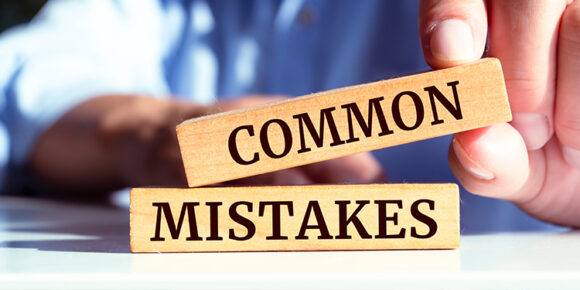
What to Do With Unverifiable Email Addresses
Author: Janet Borges
When the majority of your marketing optimization relies on email campaigns, being careless with your email lists is not a good idea. According to Statista, experts anticipate that 347 emails will be sent worldwide every day by 2022; which suggests that unless your email campaign is compelling, it will remain unopened (ignored!) or be deleted (ouch!). This will further impact your marketing strategy adversely and result in lower ROIs and a headache. Alas! A marketer’s nightmare is best avoided.
However, if your email list is filled with unverifiable email addresses, your email campaign might be at risk.
What are Unverifiable Email Addresses?

Unverifiable email addresses, also known as “accept-all” or “catch-all”, are email addresses in a domain-wide setting that reports them as unverifiable. An unverifiable email address will “catch” all the emails sent to any (existing or non-existing) email address, under the domain name. So, the email address can receive emails/messages without rejection but it isn’t possible to determine whether the email address is valid or invalid. Hence, the name – unverifiable email address.
Additional Read: Why Integration of ERP and CRM Systems into Sales and Marketing is Important?
How Do They Work?

To put it simply – assume that abc.com is a “catch-all” domain. Now, any email address (ex. [email protected]) on it will be able to receive any messages sent to the abc.com domain, even if the sender misspells the email address, say [email protected] for instance. It doesn’t matter if the recipient’s email address is incorrect, anyone using an address under the domain is bound to receive the messages, whether they want to or not. Such email addresses do not reject incoming messages or spam and hence, they’re called – “catch-all” and “accept-all”.
The Genesis of Unverifiable Email Addresses
Since unverifiable email addresses accept all messages, even spam, without rejection; their inboxes are often overflowing with unsolicited emails. Then, why do they even exist?
Traditionally, unverifiable email addresses were created to prevent the loss of important messages that would happen when email addresses were entered incorrectly. It didn’t matter if the message wasn’t sent to the designated email address; it could be sent to any address on the domain and it would be delivered.
And any message sent to this unverifiable address would be accepted in a generic inbox without fail. Periodically, the holder of the unverifiable email address could review the important messages delivered to this mailbox. Primarily, these addresses were birthed to not reject emails from any domain and to prevent important emails from getting lost.
Risks Involved with Unverifiable Email Addresses
Since unverifiable email addresses receive all “deliverable” messages, they are exploited by spammers who bombard inboxes with unasked-for messages. And amid the over-flooded inbox, it becomes harder for the recipients to take care of messages that are important and urgent. As a business, if your email list comprises unverifiable email addresses and you’re sending direct mails or mass emails to them, your brand’s reputation will be impacted. Listed below are some ways that make unverifiable email addresses risky.
Increase in Unopened Emails

As it is, standing out with your emails is a hard task, but if your messages are floating in a sea of over-flooded inboxes, it becomes harder. It is worse if they remain unopened as you waste valuable time and money while your email campaign will suffer from lower open rates. That’s why businesses should always send emails to valid email addresses only.
Higher Bounce Back Rates
Sending emails to unverifiable email addresses can result in hard bounces for B2B brands. And if the bounce back rates increase, it will negatively impact the brand’s sender score. But how can an email sent to an unverifiable email address bounce back? It can happen if the user of the unverifiable email address changes the domain setup to reject emails from your sender’s address. In that case, your messages won’t be delivered and bounce back.
Additional Read: B2B Lead Generation Strategies For Financial Companies: What You Need To Know
Damage to Brand Reputation
Now, with an increase in bounce rates, your brand’s email address can be suspected of being spammy to the Email Service Providers (ESPs) who can get back by putting you on a blacklist or redirecting your emails to spam. This could be harmful to your brand’s reputation as email communication is a primary channel for marketing campaigns. To avoid this, brands should verify and validate their email lists frequently.
Impact on Marketing Campaigns
Unverifiable email addresses are not your friends. When you look at the risk factors involved in sending messages to a “catch-all” email address, it should become clear why verifying email lists is so important today; it can have a major impact on your brand’s reputation.
Your email campaign will receive lower ROIs irrespective of your marketing efforts and worst of all; you won’t even be able to reach your primary targets. This can setback your revenue goals big time! Generally, when a business has a poor sender score, their campaign emails end up being reported for spam or in the junk folder and that’s a waste of your precious time and money.
Furthermore, if most of your marketing drives are built on data such as your email list, your data integrity will be threatened. Subsequently, your affiliated campaign plans like growing newsletter subscribers will also perform poorly.
The Right Approach
The difficult part with unverifiable email addresses is just that – they’re unverifiable. So how do you know if the address in your email list is valid or not?
Proceed with caution: do not press “send to all” because that’s a fool’s errand. Since the company’s money and reputation are on the line, it is better to use email verification services to validate the addresses in your email list.
Another easy approach is to create a substitute email address and send messages to identify valid and invalid email addresses in your list. If your email bounces back, it’s an unverifiable email address but if the email doesn’t bounce back, the address is valid. You can cleanse your list like this to avoid increasing bounce rates on your primary account and risk being suspended.
In Summation
When you have validated and verified email addresses in your email list, you get better ROIs, enhanced message deliverability, favorable open rates, improved CTRs, and lower bounce rates with valid information at your disposal. This is why brands should maintain data hygiene at all times. Only quality data can fetch you rewards worth your time and money; always verify email addresses before you “send to all”.
About Author
Janet Borges is the Business Development Director at Lake B2B. She actively collaborates with top fortune companies globally and assists them with data-driven business strategies that aid exemplary business performance. With Janet, everything begins and ends with the customer, her eye for detail and persistence to see things through regardless of the challenges encountered have enabled deep customer relationships & customer advocacy.




